Cultivating Listening
Andrea Dancer

What is an Audio Postcard?
Ironically, postcards are about nostalgia for a time of pre-internet discovery and connection. The idea of the road trip is similarly nostalgic. And yet, we are using new technologies and virtual experiences to open an ageless way of knowing and being – that of listening. The simple act of listening, like recording sound, locates us in some sense of place. In the past, this was critical knowledge --to be able to hear what was approaching and passing, close and distant, silent and loud in one’s environment. The
Audio Postcards Canada exhibition seeks to bring distinct sounds back into listening awareness in the richness of their articulations and to be reacquainted with their meaning and signification.
Like a postcard or road trip map that brings some seemingly exotic place we wish we could visit, a holiday from our mundanity, these audio postcards are about a listening version of experiencing time out of time and place out of place while connecting different people in different parts of Canada and worldwide. And yet, like the postcard, we are still sitting in our living rooms or at the kitchen table or standing transfixed at the mailbox in our own everyday lives while being present to something that, extraordinarily, brings us more into presence with ourselves wherever we are.
Curating Toward Sustainable Sound
Listening to the sound environment in everyday life is an art and a practice. Sound is fluid and dynamic. It either immerses us in a type of forgetting or challenges us to pay attention as we position our sense of selves, our attention, and our bodies in time and space through converging sounds. It all is fleeting -- like moments themselves – and, like the moments of our lives, we can choose to bring greater awareness to those moments or let them pass habitually and into obscurity. Listening to the soundscape models how to stay present in our lives.
Audio Postcards Canada is about nurturing that type of awareness. The artist-listener has activated listening with their microphone to capture the moment-to-moment minutia of sound, something expressive, and to share it with every recipient-listener who listens to their piece. Of course, the hope is the listener will bring high fidelity headphones or speakers to the experience, and also reflect on the texts and become acquainted with the artist -- but whatever the circumstance of listening, the aim is for a heightened awareness of sounds, the soundscape, and listening.
Multifaceted Listening
In curating this audio exhibition, my considerations are about creating a multifaceted listening experience for a wide-ranging public.
As we live in a visual and text bound world, there are choices built into the website around how it is entered and navigated. Do you want to listen first? Or go to the postcard to read about the artist’s intent and know who created it before you listen to the piece? Do you want to experience the sounds as sounds bringing your own context to them or frame your experience with that of the artist? At what point do you want to know about the adjudication process and what informed the juror decisions through their first-person interviews? Do you want to take the road trip first and use Google maps as the framework, grounding yourself in popular geographic media? What about Hildegard Westerkamp’s letter to you as a listener or even this curatorial framing? Perhaps you will go back and forth noting how the experience of listening changes with new contextualization. There is an element built into how the exhibition is designed that questions habits of perception and invites playful discovery.
As listening typically doesn’t happen outside of visual contexts, each artist submitted an image that is referential to their piece -- referential but not prominent in the website. The artist statements reveal something of the artistic intention, meaning-making, and focus with each piece. It’s exciting and revelatory to read how differently everyone approaches and perceives sound. The artist biographies also tell of diverse backgrounds, experiences, and interests in field recording, artistic practice, use of technology, story-telling, and emphasis in their process.
Each work is geographically located in Canada and this location is integral to the work. Listeners often bring a sense of location to a sound whether through memories, associations or the actual soundscape. Is there a quintessentially Canadian soundscape? That is an interesting question to consider as some sounds are soundmarks (signature sounds) of a place, but most sounds are strangely universal and particular at the same time.
It was also important, along with artistic audio and word-based voices, to add a face to all the contributors. Connection is also about embodiment, the sense of who someone is that’s often assigned to face to face encounters. Reinforcing everyday contexts in this virtual listening space is an important curatorial aspect of the experience -- so that you will take it into your own everyday listening, connect to creators, thinkers, practitioners and the listening itself in as many ways possible.
Some Thoughts About the Works
Each postcard is unique and conveys a different way of attending to and working with sound.
Sounds presume a kind of simplicity that belies layers of history, culture, time and knowledge. Crystal DJ Kwe Favel’s
Midnight Frogs in Squamish BC speaks to First Nation sensibilities around habitat preservation and how the simple act of listening carries complex intersections of mythology, culture, story and ecology. Kirsten Murphy’s radio piece,
Woodchop, tells of age-old practices of subsistence culture, their everyday listening familiarity, that extend from the land into the body through a lifetime, through differently marked time into contemporary life. Travis West’s
Coleman, Alberta is a composition that pinpoints a resident’s acoustic knowledge of his home town and is most reminiscent of a postcard. Arana Usue Ruiz’s
Leslie Street Spit is a collage of field recordings from a neighborhood haven that takes the listener on a summer’s evening stroll. Ethan Cayko’s
Spring Woodpecker shows how field recording can enhance understanding of non-human animal roles in a soundscape (biophony) and how processing can enhance that understanding. In Matt Rogalsky’s
Bald Eagles, Hornby Island, the precision of research field recording carries such detail and clarity that the attending soundscape foregrounds the subtlety of bodies in flight.
Sometimes, the simplest listening moments are the most profound. It’s easy to miss them. Constantine Katsiris’
Missing Soffits models the art of field recording through an overlooked everyday acoustic event -- the missing soffits on his house. Intriguingly, the recording renders the wind as static and creates an opportunity for ethereal listening somewhat like an Aeolian wind harp. Michael Trommer’s
Long Beaches Binaural uses a binaural microphone to capture movement of water, people, boats and the recordist in relationship to the landscape. Binaural technology creates the 3-D effect represented in locational, directional, distance, and proximal listening. Leah Abramson’s
Beach Rub highlights aural forms of storytelling through the use of a hydrophone to investigate underwater research and artistic subjects, killer whales. She brings awareness to presumed silent worlds and their vulnerability, mystery, and complexity. The carefully crafted ambience of Rich Bitting’s
Mississagi Rocks epitomizes how an iconic geographic feature, in its unique watery gurgling, holds local history, culture and story.
Listening to contemporary life and urban soundscapes carries different considerations. Graham Meisner’s electroacoustic composition,
Lunenburg, captures how the sounds of machineries and materials also trace histories, cultures and technologies - an important aspect of sound ecology. David Arango-Valencia’s composition,
Five Roses, is a richly crafted romp through Montreal’s urban soundscape. What might be construed as freneticism or noise turns on juxtaposed musical elements -- all part of a lively city. Andrew Scott Israelsen’s
#YEG Waiting keeps meaning hovering around the voices and languages that share equal space with a musical instrument (an oud) to mimic chance street encounters. Sounds can also evoke memories and associations, such as in Kevin Austin’s composition,
In The Streets, where the dynamic sounds of a boisterous crowd position the listener as a participant like the recordist and thereby keep attention riveted. Bells around the world are symbolic -- and unique in their signature tones and resonances. Sandy McLennan’s
Clock Bells, Toronto Old City Hall locates the listener specifically at one point in the soundscape where the bells disrupt ambient city sounds. Another instance of the artistic potential of field recoding is Steve Barsotti’s
Victoria Johnson Bridge. What might be passed-by as dull traffic exposes a unique musicality in tires passing over a specific part of the bridge. This recording also references the sounds and technologies of acoustic features that are now archaic or extinct.
These are the remarkable ways in which sounds, live or recorded, communicate time out of time and place out of place. Curating
Audio Postcards Canada has been a remarkable journey for me as well, and now I leave you to find your own meanings and have your own experience of each audio postcard. Please let us know, through social media or email, about what you discover about your own journey into listening to an emerging sense of a Canadian soundscape and an awareness of sound. Enjoy!
Andrea Dancer, Ph.D., is an acoustic arts-based researcher, radio documentarian, sound artist and soundscape composer whose works have premiered in North America and Europe. She has designed sound-based educational programs for museum and galleries, and curated audio and multi-media exhibitions internationally. She is the Chair of the Canadian Association of Sound Ecology.
http://www.andreadancer.wordpress.com
Cartes postales sonores Canada: cultivez l’écoute
Qu’est-ce qu’une carte postale sonore?
Paradoxalement, les cartes postales traditionnelles étaient un moyen d’explorer et de communiquer avant l’arrivée d’Internet. Nous en gardons une certaine nostalgie, à l’image des voyages en voiture. Toutefois, pour l’exposition Cartes postales sonores Canada, nous utilisons les nouvelles technologies et profitons des expériences virtuelles pour explorer un mode d’apprentissage intemporel propre à notre manière d’être : l’écoute. Le simple fait d’écouter, de percevoir des sons, nous inspire un sentiment d’appartenance. Autrefois, l’écoute était essentielle; elle nous permettait d’entendre les choses qui passaient, qui s’approchaient ou qui s’éloignaient, silencieuses ou bruyantes. L’objectif de l’exposition virtuelle Cartes postales sonores Canada est de réintroduire des sons distincts dans notre conscience sonore afin d’éveiller notre écoute à leur précision et de favoriser la redécouverte de leur signification.
Comme les cartes postales traditionnelles ou les cartes routières qui illustrent des endroits exotiques que nous aimerions visiter pour rompre avec notre routine, les cartes postales sonores nous permettent de voyager dans le temps et dans l’espace. En effet, elles nous relient à différentes personnes de partout au Canada et dans le monde. Pourtant, elles nous aident, de façon presque surnaturelle, à reprendre contact avec nous-même peu importe où nous nous trouvons, soit bien installé dans notre salon, à table ou, captivé devant notre boite aux lettres.
Conservation durable des sons
Il s’agit d’un art de prendre conscience de son environnement sonore, et cela demande beaucoup d’entraînement. Le son est fluide et dynamique, il vous imprègne et vous procure une certaine distraction, ou vous incite à être attentif à la façon dont vous vous percevez vous-mêmes et percevez votre corps dans le temps et l’espace, là où les sons convergent. Il est éphémère, tout comme chaque moment qui passe. Déciderez-vous, alors, de prendre davantage conscience de ces moments? Les laisserez-vous tomber dans l’oubli, comme vous en avez pris l’habitude? Écoutez les paysages sonores pour vous ancrer dans votre vie.
Carte postales sonores Canada vise à encourager cette prise de conscience. À l’aide d’un microphone, l’artiste-auditeur écoute et capture, instant après instant, des sons particuliers qui lui parlent pour, ensuite, en faire part aux auditeurs. Bien entendu, l’expérience de l’auditeur est optimale s’il porte un casque d’écoute ou utilise des haut-parleurs haute-fidélité, s’il médite sur le texte de l’artiste, et s’il se familiarise avec ce dernier. Or, quelles que soient les conditions d’écoute, l’objectif reste le même : prendre conscience des sons, du paysage sonore – de l’écoute.
Écoute multidimensionnelle
En choisissant les œuvres de cette exposition, je souhaite créer une expérience d’écoute multidimensionnelle pour un vaste public.
Comme nous vivons dans un monde d’images et de textes, il a donc fallu choisir comment le public naviguerait sur le site Web et le consulterait. Souhaitez-vous, auditeurs, écouter d’abord les extraits et lire les intentions de l’artiste ensuite ou vice versa? Souhaitez-vous écouter les sons sans contexte pour ne pas être influencé par l’expérience de l’artiste ou souhaitez-vous les écouter, tout en étant guidé par son expérience? De plus, à quel moment de votre navigation souhaitez-vous connaître le processus d’évaluation et les critères de sélection qui ont orienté la décision des juges après leurs entrevues individuelles avec chaque participant? Autrement dit, ferez-vous le voyage d’abord et utiliserez-vous Google Maps ensuite pour baliser vos déplacements? Vous ancrerez-vous dans les médias géographiques populaires? Qu’en est-il de la lettre de Hildegard Westerkamp et du présent cadre de sélection? Que représentent-ils pour vous en tant qu’auditeur? Peut-être ferez-vous la navette d’une page à l’autre et réaliserez-vous que lorsque le contexte change, l’expérience sonore change également. La conception de l’exposition vous permettra de remettre en question vos habitudes de perception et de découvrir tout en vous amusant.
En règle générale, les contextes sonore et visuel vont de pair; alors, nous avons d’une part affiché sur le site Web une image, obtenue de l’artiste, qui, tout en demeurant en second plan, renvoie à l’œuvre. Le mot de l’artiste, d’autre part, divulgue l’intention artistique de l’œuvre, sa signification et son point central. Cela dit, il est très excitant et très révélateur de constater que la perception des sons varie d’une personne à une autre. Donc, dans leur biographie, les artistes font part de leurs antécédents et de leurs expériences dans le domaine de l’enregistrement sonore; des raisons pour lesquelles ils s’y sont intéressés; de leurs pratiques artistiques, et de leur utilisation de la technologie. Ils y racontent également des anecdotes et mettent l’accent sur le processus qu’ils ont entrepris.
Toutes les œuvres ont été enregistrées au Canada. Le lieu fait partie intégrante de chaque pièce. Il est vrai que les sons suscitent, en général, un sentiment d’appartenance chez les auditeurs, et ce, grâce aux souvenirs et aux liens qu’ils établissent ou tout simplement grâce au paysage sonore lui-même. Existe-t-il un paysage sonore typiquement canadien? Il s’agit ici d’une question intéressante. Effectivement, certains sons servent de point de repère sonore (un son caractéristique) d’un lieu, mais la majorité d’entre eux demeurent à la fois étrangement universels et particuliers.
Il était aussi essentiel de personnaliser ces œuvres d’art sonores et ces textes. Les liens interpersonnels se créent, entre autres, lorsque nous pouvons mettre un visage sur un nom. L'identité se forge, souvent, plus facilement par une rencontre en personne. Un important objectif de l’exposition est de renforcer l’écoute des sons de tous les jours à l’aide de ces œuvres en ligne. De cette façon, les auditeurs peuvent les intégrer dans leurs habitudes d’écoute et créer un lien avec les artistes, les théoriciens, les professionnels et avec l’écoute, elle-même.
Quelques réflexions sur les œuvres
Chacune des cartes postales est unique et exprime une façon différente de traiter et de modeler le son.
Les sons osent, par leur simplicité, contester l’histoire, la culture, le temps et les connaissances. L’œuvre de Crystal DJ Kwe Favel,
Les grenouilles de minuit à Squamish, C. B., témoigne du sujet délicat de la préservation des habitats pour les Premières Nations et montre que le simple fait d’écouter peut nous transporter au carrefour de la mythologie, de la culture, des récits et de l’écologie. L’œuvre de Kirsten Murphy,
La mélodie du bûcheron, illustre, à l’aide de sons familiers, d’anciennes pratiques qui ont permis d’utiliser la nature pour subvenir aux besoins du corps pendant des vies entières et d’ère en ère jusqu’à aujourd’hui. L’œuvre de Travis West,
Carte postale sonore de Coleman, Alberta, témoigne bien de la connaissance acoustique qu’a Travis de son village natal : une véritable carte postale.
Leslie Street Spit d’Arana Usue Ruiz consiste en un montage d’enregistrements qui convie l’auditeur à une promenade d’été en soirée dans un havre paisible.
Un pic-bois au printemps d’Ethan Cayko fait la preuve que l’enregistrement et le traitement du son peuvent améliorer la compréhension du rôle des animaux dans les paysages sonores (la biophonie). Dans l’œuvre de Matt Rogalsky,
Les pygargues à tête blanche de l'île Hornby, la précision de l’enregistrement est tellement détaillée et claire que le climat sonore vole pratiquement la vedette au vol subtil des oiseaux.
Parfois, les sons les plus simples sont les plus évocateurs. Il est si facile de ne pas les entendre.
Avec Les soffites manquants, Constantine Katsiris, cultive son art en enregistrant un évènement sonore jugé banal et qui peut être si facilement ignoré : le son des soffites manquants de sa maison. Étrangement, l’enregistrement illustre l’inertie du vent, ce qui rend le son irréel, comme la musique d’une harpe éolienne, en quelque sorte.
Dans Longues plages en binaural, Michael Trommer utilise un microphone binaural pour enregistrer les mouvements de l’eau, les gens et les bateaux ainsi que pour capturer la relation entre l’enregistreur et le paysage sonore. La méthode d’enregistrement binaural cherche à reproduire les sons pour qu’ils soient perçus comme étant en trois dimensions, grâce à la localisation, la direction, la distance et la proximité sonore.
Dans Massage sur les galets, Leah Abramson, raconte une histoire sonore sous-marine à l’aide d’un hydrophone; son sujet artistique : les épaulards. Elle donne la parole à un monde supposément silencieux empreint de vulnérabilité, de mystères et de complexité. L’atmosphère que Rich Bitting a soigneusement confectionnée dans
Les rochers de Mississagi illustre bien comment un repère géographique célèbre et ses gargouillements singuliers font maintenant partie de l’histoire, de la culture et des récits locaux.
Divers facteurs doivent être pris en compte pour que nous puissions être à l’écoute de la société moderne et des paysages sonores urbains. La composition électroacoustique de Graham Meisner,
Lunenburg, illustre bien que les sons de machines et de matériaux retracent l’histoire et que les cultures ainsi que la technologie s’y intègrent – un important aspect de l’écologie sonore. La pièce de David Arango-Valencia’s,
Five Roses, consiste en une danse chorégraphiée dans le paysage sonore montréalais. Les sons, qui pourraient être perçus comme frénétiques et bruyants, s’unifient avec les éléments musicaux et se mêlent à la voix de cette ville dynamique. L’identité de l’œuvre d’Andrew Scott Israelsen,
Escale à YEG, repose sur les voix, les langues et l’instrument de musique (un oud) qui se partagent l’espace de façon homogène pour imiter les rencontres fortuites de la rue. Les sons peuvent aussi évoquer des souvenirs et nous permettre de faire des associations, comme la pièce de Kevin Austin,
Dans la rue!, dans laquelle l’auditeur est transporté au cœur de la foule bruyante et dynamique comme s’il y était, envouté. Les cloches sont symboliques, peu importe où elles se trouvent dans le monde. Chaque cloche possède une tonalité et une résonance unique. Dans l’œuvre de Sandy McLennan,
Les cloches de la tour de l’ancien hôtel de ville de Toronto, l’auditeur se retrouve à un endroit précis du paysage où les cloches perturbent les sons ambiants de la ville. Un autre bon exemple artistique de traitement du son se trouve dans l’œuvre de Steve Barsotti,
Le pont de la rue Johnson à Victoria. Les sons musicaux des pneus qui passent à un endroit précis pourraient facilement être perçus comme de banals sons de circulation routière. Cet enregistrement renvoie également à des sons et à des techniques de nature acoustique qui sont archaïques et révolus.
Ces enregistrements illustrent bien que le son, naturel ou enregistré, nous transporte, dans le temps et dans l’espace. Cette sélection fut une remarquable aventure pour moi. Maintenant, c’est à votre tour de tirer vos propres conclusions et de vivre vos propres expériences sonores. Racontez-nous, à l’aide des médias sociaux ou par courriel, vos découvertes et votre parcours dans le monde émergeant des paysages sonores canadiens. Prenez conscience du son et profitez-en!
Andrea Dancer, Ph.D., est un artiste sonore et compositeur soundscape, documentariste radio, et chercheur basée sur les arts acoustique dont les œuvres ont été présentés en Amérique du Nord et en Europe. Elle a conçu des programmes audio et expositions multi-médias à l'échelle internationale, incluant des programmes sonores éducatifs pour musées et galeries. Elle est présidente de l'Association canadienne de l'écologie sonore. Visite :
http://www.andreadancer.wordpress.com

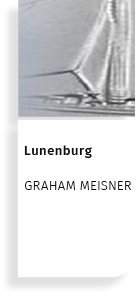





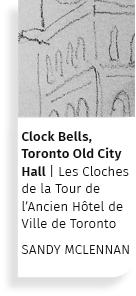








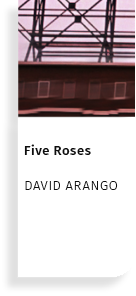


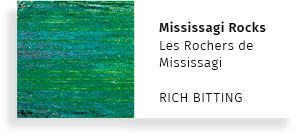


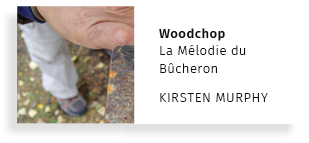


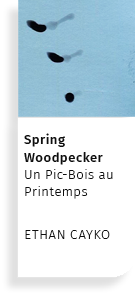





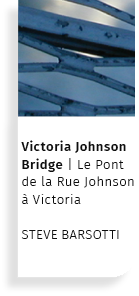


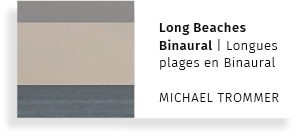


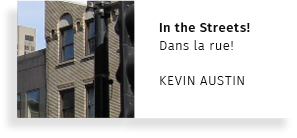








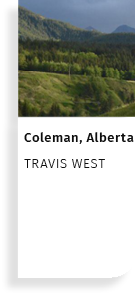


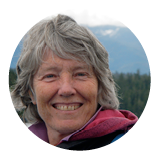
 Dear Listener!
Dear Listener!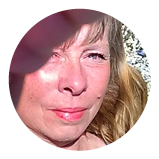
 What is an Audio Postcard?
What is an Audio Postcard?  Moderator Carmen Braden sat down with each Audio Postcards Canada adjudicator to discuss their process in choosing the final 16 compositions out of 87 submissions. The conversations are insights into how different acoustic ecologists, sound artists, and electroacoustic composers think about sound and how they engaged with the audio compositions.
Moderator Carmen Braden sat down with each Audio Postcards Canada adjudicator to discuss their process in choosing the final 16 compositions out of 87 submissions. The conversations are insights into how different acoustic ecologists, sound artists, and electroacoustic composers think about sound and how they engaged with the audio compositions.  Tyler Kinnear is a PhD candidate in musicology at the University of British Columbia. His work focuses on contemporary sonic art, with particular interest in conceptualizations of nature, soundscape documentation and composition, modes of listening, and alternative performance spaces. Tyler has contributed to the Ecomusicology Newsletter, Music & Politics, Organised Sound, and Soundscape. In his spare time, Tyler organizes public listening walks and performs and composes with the sonic environment.
Tyler Kinnear is a PhD candidate in musicology at the University of British Columbia. His work focuses on contemporary sonic art, with particular interest in conceptualizations of nature, soundscape documentation and composition, modes of listening, and alternative performance spaces. Tyler has contributed to the Ecomusicology Newsletter, Music & Politics, Organised Sound, and Soundscape. In his spare time, Tyler organizes public listening walks and performs and composes with the sonic environment.  Stephanie Loveless is a Montréal-born artist who works with sound, video, film and voice. She makes soft-speakers out of paper cups, performance prescriptions for audience-identified ailments, and sound works that channel the voices of plants, animals, and musical divas. Her work has been presented in festivals, galleries, museums and artist-run centers worldwide. She holds MFAs from Bard College and Rensselaer Polytechnic Institute, and a certification in Deep Listening. www.stephanieloveless.ca
Stephanie Loveless is a Montréal-born artist who works with sound, video, film and voice. She makes soft-speakers out of paper cups, performance prescriptions for audience-identified ailments, and sound works that channel the voices of plants, animals, and musical divas. Her work has been presented in festivals, galleries, museums and artist-run centers worldwide. She holds MFAs from Bard College and Rensselaer Polytechnic Institute, and a certification in Deep Listening. www.stephanieloveless.ca Since the early 1970’s, Charlie Fox has created and exhibited audio art, experimental film, video art and multimedia installation artworks in Canada and abroad. As a multidisciplinary artist, he has also been integral to theatre, dance and music productions and performances, directed arts documentaries for broadcast television, curated art exhibitions and, through his artistic practice, has developed internationally prominent research in immersive sound. Photo Credit Loretta Paoli
Since the early 1970’s, Charlie Fox has created and exhibited audio art, experimental film, video art and multimedia installation artworks in Canada and abroad. As a multidisciplinary artist, he has also been integral to theatre, dance and music productions and performances, directed arts documentaries for broadcast television, curated art exhibitions and, through his artistic practice, has developed internationally prominent research in immersive sound. Photo Credit Loretta Paoli  Neutral Moderator and Interview Host Carmen Braden is a composer from Northern Canada, who has lived most of her life in Yellowknife, Northwest Territories. Many of her works incorporate environmental elements that reflect the sub-Arctic environment. Carmen’s works have been performed throughout Canada by internationally-acclaimed performing ensembles including the Elmer Iseler Singers, the Gryphon Trio, the Land’s End Trio, GroundSwell and the Penderecki Quartet. Carmen is the vice-chair of the Canadian Association for Sound Ecology.
Neutral Moderator and Interview Host Carmen Braden is a composer from Northern Canada, who has lived most of her life in Yellowknife, Northwest Territories. Many of her works incorporate environmental elements that reflect the sub-Arctic environment. Carmen’s works have been performed throughout Canada by internationally-acclaimed performing ensembles including the Elmer Iseler Singers, the Gryphon Trio, the Land’s End Trio, GroundSwell and the Penderecki Quartet. Carmen is the vice-chair of the Canadian Association for Sound Ecology.